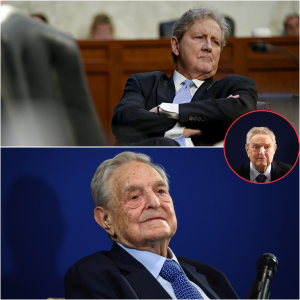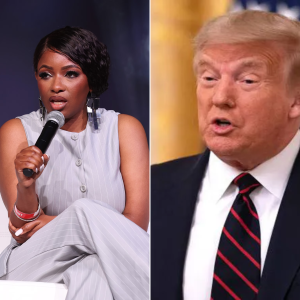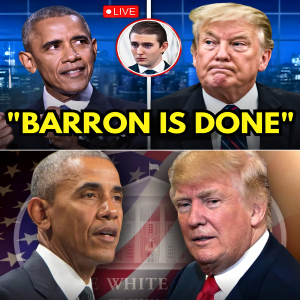A Televised Takedown, a Viral Firestorm, and the Blurred Line Between Politics and Entertainment.
In a moment that revealed as much about American politics as it did about the state of late-night television, Jimmy Kimmel and Jim Carrey’s on-air dismantling of former President Donald J. Trump rapidly evolved from a comedic segment into a cultural flashpoint. What began as a routine monologue on Kimmel’s show—one part satire, one part social commentary—quickly swelled into a sprawling online debate, drawing in political loyalists, entertainment observers and a digital audience conditioned to interpret every public exchange as part of a larger, ongoing battle for narrative dominance.

Kimmel, no stranger to public clashes with political figures, framed his criticism with the practiced ease of a host accustomed to high-stakes humor. But it was the tone—a mixture of incredulity, weariness and sharp-edged satire—that set this moment apart. His remarks about Trump’s past feuds and his tendency toward personal animus tapped into a broader critique: that the former president’s public persona has long been shaped by a combustible blend of grievance and theatricality.
Carrey, appearing as a guest, intensified the energy. His comments, marked by the surrealism and improvisational chaos long associated with his comedic style, provided an unexpected counterpoint to Kimmel’s more journalistic cadence. Where Kimmel dissected Trump’s rhetoric with precision, Carrey skewered it with elaborately constructed analogies—comparing Trump’s public behavior to a malfunctioning car salesman or a figure eternally trying to roll back the odometer of national progress. The exchange, at times bordering on absurdist theatre, became a portrait of two entertainers grappling with the consequences of political spectacle in an era when public life is increasingly mediated through television and social media.

Yet the moment’s significance was not confined to the studio. Clips circulated across platforms within minutes, accumulating millions of views and drawing immediate reactions from political commentators and supporters on both sides. Some praised the segment as a long-overdue reckoning with the former president’s penchant for personal attacks and misinformation. Others dismissed it as partisan grandstanding dressed in the language of comedy. The speed and scale of the response underscored a defining feature of modern political culture: the degree to which televised conflict can shape not only public opinion but also the emotional tenor of national discourse.
Behind the scenes, according to two individuals familiar with the show’s production who were not authorized to speak publicly, producers had anticipated a pointed discussion but not the level of intensity that unfolded on air. One noted that several lines from Carrey were cut moments before broadcast for fear they would overshadow the show’s thematic focus. Another described the atmosphere after taping as “a mix of exhilaration and caution,” reflecting both the unpredictability of live television and the delicate balance late-night programs must navigate between entertainment and political engagement.

Trump himself did not immediately respond to the segment, though several individuals close to his media operation—speaking anonymously to avoid reprisal—suggested the former president was aware of it and “unhappy with the portrayal.” Within hours, surrogate commentators began appearing on aligned outlets, framing the exchange as an attack on Trump’s character rather than an analysis of his record or rhetoric. Their responses mirrored the broader feedback loop that has defined the Trump-era media landscape: an incident occurs, it is amplified online, and each political faction constructs its own narrative scaffold around it.
The episode also resurfaced long-running debates about the role of satire in public life. Can comedy meaningfully influence political understanding? Does its emotional immediacy distort complex realities, or does it illuminate truths more directly than traditional journalism? The Kimmel–Carrey exchange offered no easy answers, but it highlighted a reality long acknowledged within entertainment circles: in an age of hyperpolarization, humor has evolved into a vehicle for political critique as potent as any editorial page.
By the following morning, the segment had been analyzed, clipped, subtitled, remixed and reframed countless times. It had become, in effect, a case study in digital virality—another reminder of how rapidly televised moments can escape their intended context and transform into national talking points. For Kimmel and Carrey, the exchange may be remembered simply as a particularly sharp installment in their ongoing commentary on American politics. For viewers, however, it served as a window into the tensions shaping the country’s public conversation: the exhaustion, the incredulity, and the uneasy fusion of humor and alarm that has become a signature of the post-2016 media landscape.
Whether the moment holds lasting significance or is eclipsed by the next wave of controversy remains to be seen. But for now, at least, a late-night monologue has once again become part of the national soundtrack—echoing across screens, sparking debate, and revealing how intertwined entertainment and politics have become in American life.





